JNR 103 series
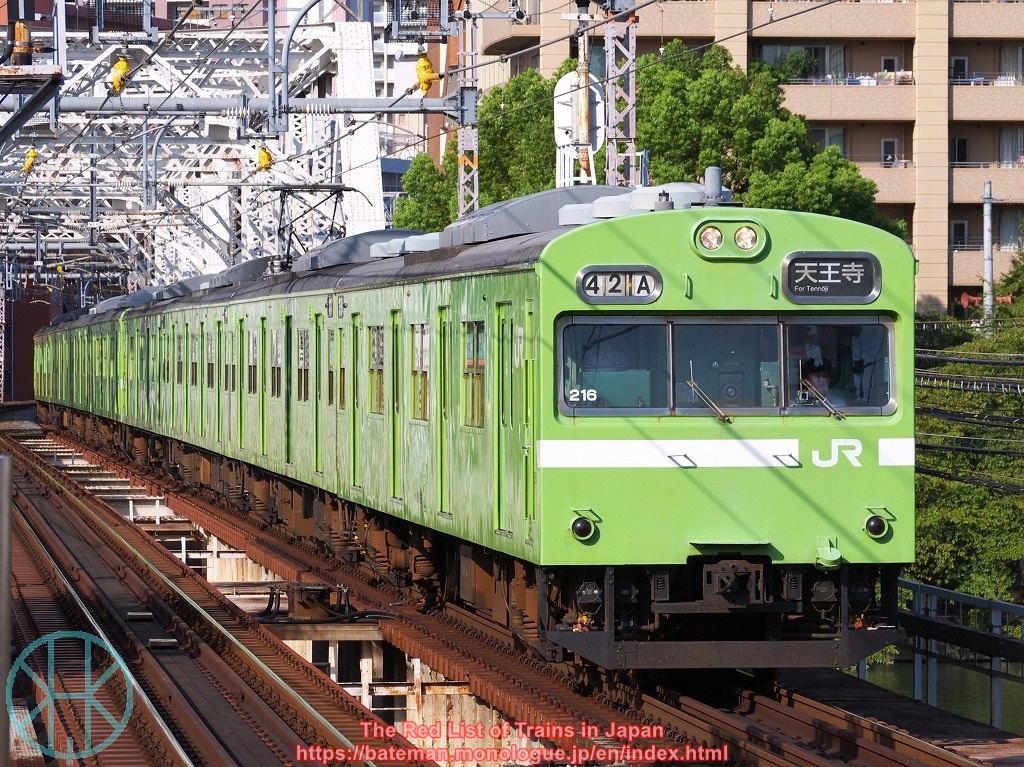
Data (as of 29 Nov 2025)
| Status: | Endangered |
| (JR West, JR Kyushu) | |
| Extinct | |
| (JR East, JR Central) | |
| Constructed in: | 1963-84 |
| Number built: | 3,503* |
| Registered: | 47 |
*Including 56 carriages converted from 72 and 101 series.
History
The 103 series is a type of commuter train for Tokyo and Osaka, and it is the most numerous train in Japanese railway history. Japanese National Railways developed the series as more flexible, power-saving and less costly than JNR 101 series (1957-2003). The 103 series contributed to deal with skyrocketing demand for commuter rail during the economic miracle. They could form up to 15 coaches, like ones used on Joban Line (Rapid) in the 1980s to 2000s.
Its design is simple, with 101-series-like front end and four sets of doors per carriage with longitudinal seating. Acceleration rate is not as high as the 101 series due to costs, a power shortage and overheating of overhead wires. The 103 series was developed for commuter lines where distance between stations is short (1-2 miles), but many units were later allocated to those where the distance is longer than 3 miles.
The 103 series trains were first introduced to Yamanote Line in 1963. JNR introduced more to Chuo, Joban, Keihin-Tohoku and Sobu Lines, as well as Hanwa Line, Tokaido and Sanyo Main Lines in Osaka area by the 1970s. It is not exaggerating to say that literally all commuter lines of JNR (and JR East) in Tokyo were once served by the 103 series. They were also used on suburban lines and those outside metropolises, such as Senseki and Hachiko Lines. In some areas where distance between stations is long, speed of other services (not least limited express) was confined to slower than 95 km/h (60 mph). Thus, though the 103 series is recognised as the most successful commuter train in the history, it caused some troubles.
Unsurprisingly, there were many variants. Front carriages introduced after 1974 look slightly different (especially windshields). Some of them were compatible with underground services, such as those on Joban Line (through-service to Chiyoda Line) and Chikuhi Line (through-service to Airport Line of Fukuoka City Subway). Furthermore, there had been so many remodelling and refurbishment that it is impossible to cover them all in this article.
JNR replaced some units with 205 series, but only just. When JNR was privatised in 1987, 2,418 carriages were succeeded by JR East, 70 by JR Central, 894 by JR West and 54 by JR Kyushu. Because of the figures, it was once said that JR East and West would be unable to replace them. Those JRs decided to refurbish and retain them while new, less costly trains were available.
JR East had been using them on various lines in Greater Tokyo Area and Senseki Line in Sendai. The company first withdrew all trainsets on Yamanote Line, many of which had no air-conditioning. More than hundreds carriages were disposed of every year especially after 2000, and the last unit in Greater Tokyo Area (Joban Rapid and Narita Lines) retired in 2006, and the last one on Senseki Line was withdrawn in 2009. Some units were exported to Indonesia.
It is not well-known that JR Central had the 103 series too. They were mostly used on Chuo Main Line at peak times and a few on Kansai Main Line in Nagoya area. The company refurbished some of them, but all units were taken out of service by 1999.
JR West dramatically refurbished considerable number of carriages, and widely used in Osaka area until the late-2010s. Several units were reallocated to Okayama and Hiroshima areas, some of which had toilets. They were used on Osaka Loop Line until 2017 and Hanwa Line until 2018. Today, there are a few units as described further below.
JR Kyushu has been using them on Chikuhi Line. All units were initially formed of six coaches, but the company converted some of them to three-carriage units. They were used for through-services to Fukuoka City Subway Airport Line, but superseded by 305 series in 2015. Today, a few units are used for regional services of Chikuhi Line.
Current Operations & Future Prospects
Stopping services on Bantan and Kakogawa Lines in Hyogo Prefecture are mostly provided by the 103 series, but likely to be withdrawn in the mid-2020s. All units have been converted from intermediate carriages so that they look different from genuine design, but those on Bantan Line look better.
JR Kyushu has five three-car units on Chikuhi Line, and they are used between Chikuzen-Maebaru and Nishi-Karatsu. Since they were newer than other units (built in 1982), the company has not announced yet about the withdrawal. Even so, they might retire in the mid-2020s as well.
Photos

Those on Nara Line were said to be one of the last "original style" units.
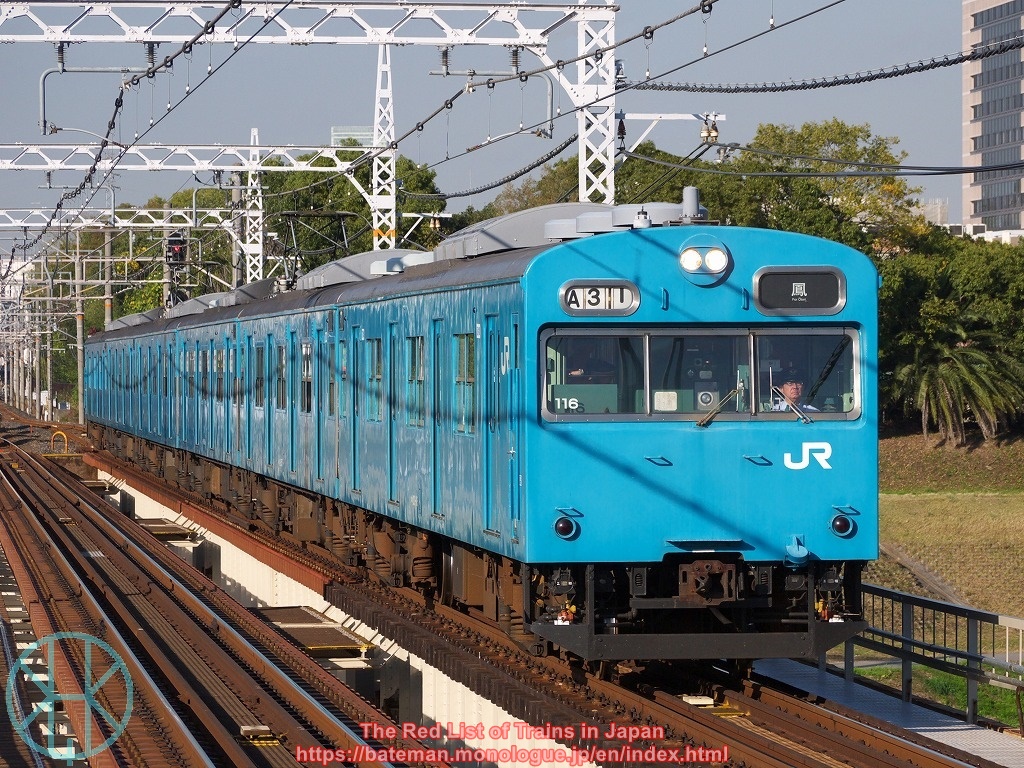
Stopping services on Hanwa Line had been served mostly by the 103 series until the mid-2010s.
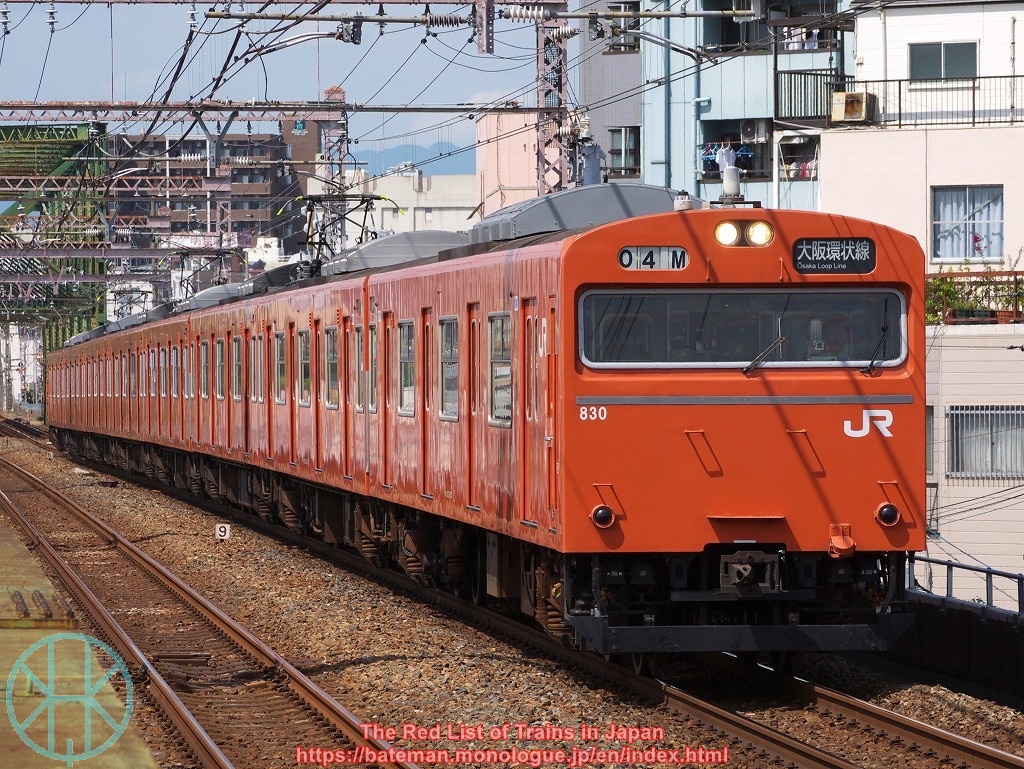
An orange unit on Osaka Loop Line (which was introduced after 1974).
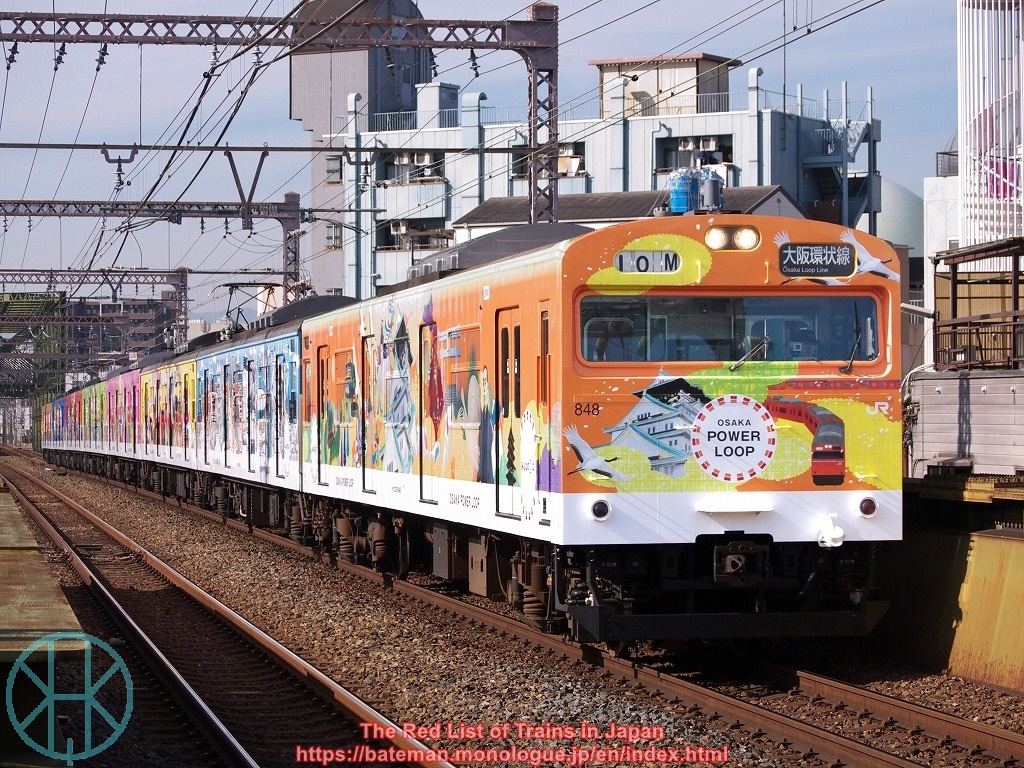
A unit on Osaka Loop Line was decorated by local artists, which was disturbingly flashy.

Many Bantan Line units were converted from intermediate carriages in 1997-98.

The 103 series was also used in Hiroshima area, though only few units in the 2010s.
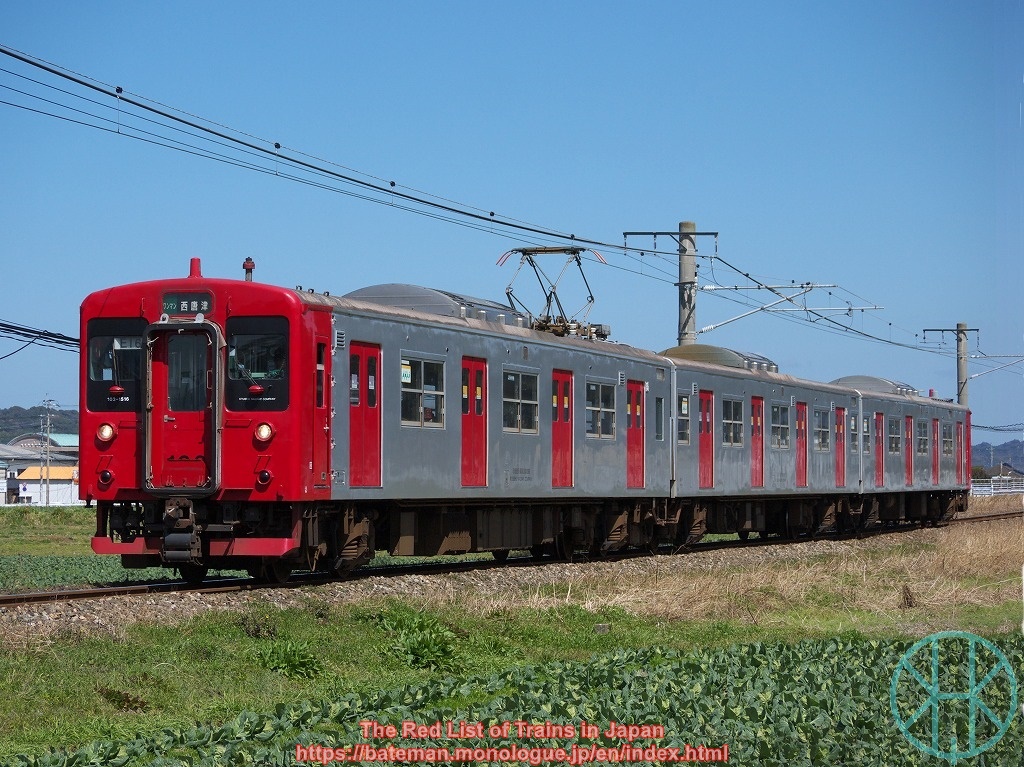
Those owned by JR Kyushu look completely different, and it is hard to believe that they are 103 series as well.
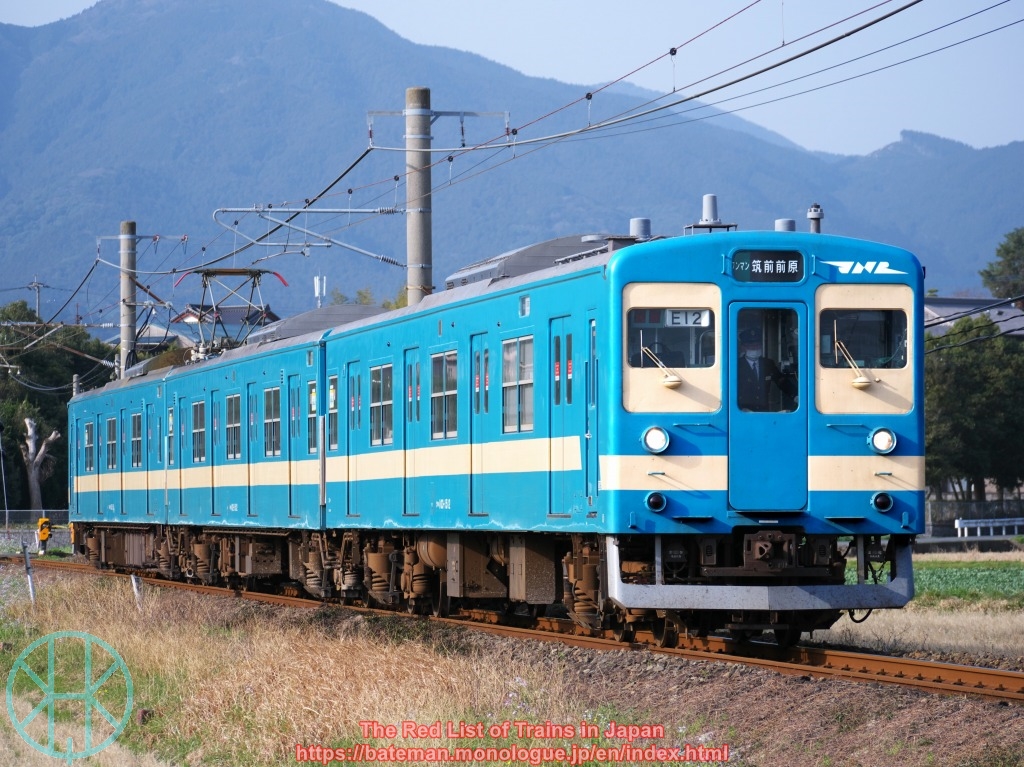
The Chikuhi Line units were initially painted as such. JR Kyushu restored a unit to its original livery with JNR sticker in 2023.
(Updated: 29 Nov 2025)
